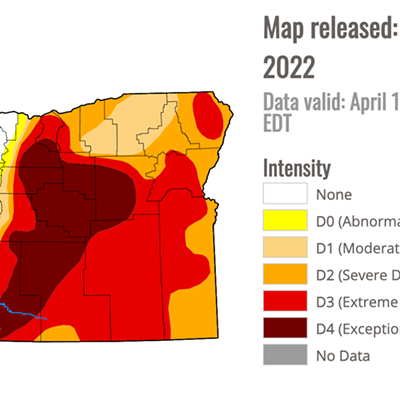Right here in our very own backyard —quite literally—is the strangest insect we will ever see: The Jerusalem Cricket (Stenopelmatus fuscus).
However, to begin with, it's not a cricket, and has nothing whatsoever to do with Jerusalem. (How it got that name is as baffling as how it got here.) It really belongs in a large group of insects known as Stenopelmatinae (don't let the name throw you, it's pronounced Sten-op-el-may-tin-aa-ee) that live in New Zealand —yes, New Zealand—and that's just the beginning of a wonderful conundrum, for me anyway.
Because of its human-like head, and because it's found throughout the North and Southwest, there are several Navajo names referring to it as: c'ic'in lici or "red-skull," Ch
osh bitsiitsiin ichí'í or "red-skull bug," Tsiits'iin ichí'ítsoh or "big red-skull," and Wóó tsiits'iin/Yaa' tsiits'iiní or "skull insect."
To make it more fun, the Hopi People know it as, qalatötö or "shiny bug." In Mexico it's known as niño de la tierra or "earth child" and cara de niño or "child's face."
There are also several English names I've heard, but most can't be used in this article because they're best interpreted as: "What in the @#$% is that thing?!"
We also have to stop calling them "crickets," because they ain't. They are biologically known as weta ("wet-ah," a word from the Maori language, where singular and plural have the same form.) Got all that?
I first became aware of this beautiful insect while living in Bend back in the 50s. I was a powder monkey for Bill Miller in his pumice mines west of Bend (where William E. Miller School stands today).
One night when I was pussy-footin' around looking for villains stealing gas from our equipment, I heard a very strange hissing, vibrating sound. When I looked toward the sound there was this weird insect I'd never seen before in my whole life: red-headed and human-like, glaring at me! No wonder most people when seeing them for the first time flip out! It was a male weta making a drumming/hissing sound by rubbing its abdomen on the ground.
Weta are not poisonous or venomous; even if they were, they do not possess a method of getting it into a body of another animal. Yes, they can bite—and if you're handling one you may discover how painful it can be—but if the skin is broken the only thing that can happen after that is some kind of infection from what was between you and said bite.
They do not, nor ever have wings. But, that said, they do go flying frequently on summer nights...in the jaws of big brown bats and hoary bats. It just so happens that there's a great deal of excellent weta habitat throughout this neck of the woods.
Apparently, migrating big brown and hoary bats have found these fat, little six-legged insects delicious -- barring the legs and heads. It is not uncommon for residents of Central Oregon to find weta heads and legs along with bat guano and urine on the porches and walls of their homes. If you don't like finding such attractive weta body parts and body excrement on your porch, call me, I have a non-violent cure that I think works.
Now for another wondrous conundrum of these beautiful creatures: Biologically, they're connected to a huge race of Stenopelmatinae that indeed live all over New Zealand, and also South America. With that in mind, I think we can then see a very strong possibility that the weta of South America have, over the millennia, migrated from, say, Chile and Argentina, north to the Panama isthmuses into Mexico and thusly into the Northwest area of our good old U.S. of A.
You have to admit, that would take a whale of a lot of time and it would be quite a swim for them from New Zealand. Whoops, that won't work; weta can't swim, and we all know there are a really big bunch of hungry reptiles, fish, birds and mammals in the ocean between Chile and New Zealand. So, how did they get here? Did they travel with the Maori who it has been said got here on bamboo boats? Maybe.
How about parallel evolution? Could they have evolved here in the Americas over time? Maybe.
But how about this: What if they first arrived here when Gondwanaland started drifting? Gondwana, also called Gondwanaland, was an ancient supercontinent that incorporated present-day South America, Africa, Arabia, Madagascar, India, Australia and Antarctica.
Some 600 million years ago, the first stage of its breakup began. About 180 million years ago it sort of slowed down to where things are today. The matching shapes of the coastlines of western Africa and eastern South America fit, and the concept that all of the continents of the Southern Hemisphere were once joined together was set forth in detail by a German meteorologist in 1912. He envisioned a single great landmass, with Pangaea and Gondwana comprising the southern half of this supercontinent.
The concept of Gondwana was widely accepted by scientists from the Southern Hemisphere, and when the theory of plate tectonics demonstrated that the ocean basins are not permanent global features, everything fell into place, (pun intended).
That explains why weta are found in South America today—they came along for the ride, and why we have them here in our homeland, but, boy, are they old. I guess they got here when Reub Long did, when the Sun was a tiny thing, there weren't no Moon, and the Big Dipper was a tiny drinkin' cup....



























